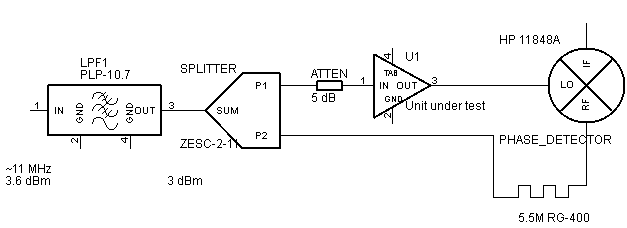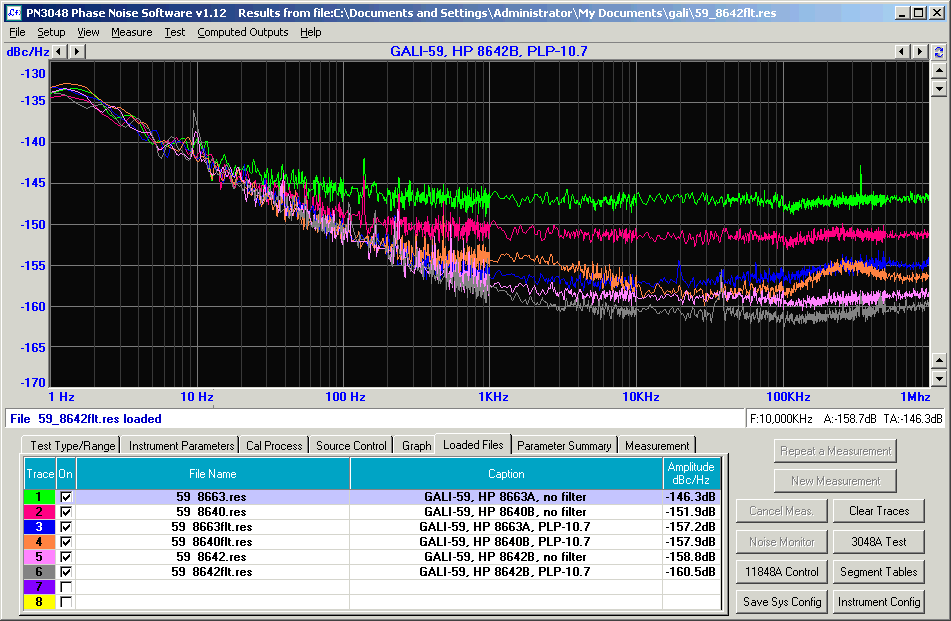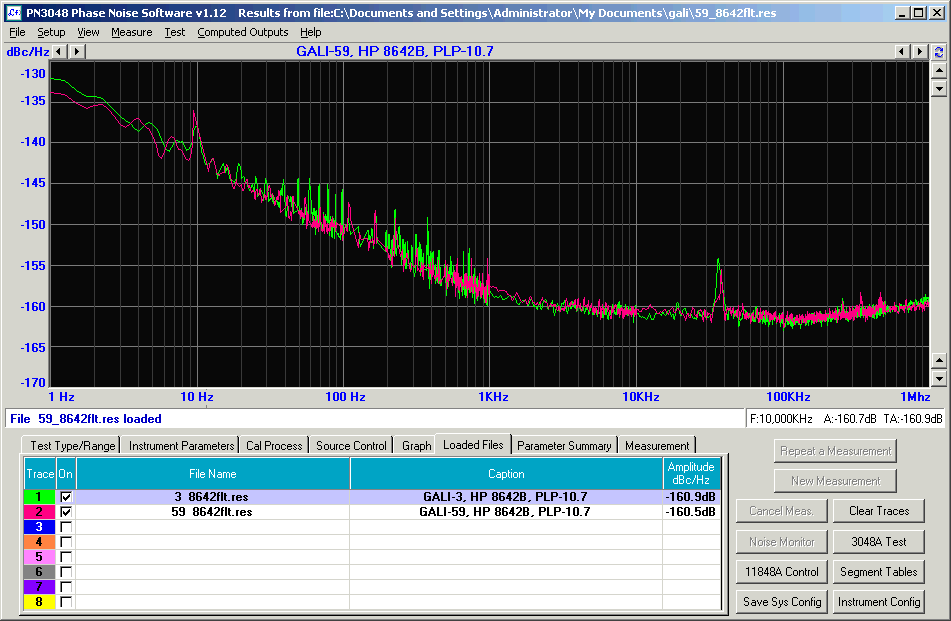

In the tests below, three different signal generators were used to perform single-source residual PN measurements in accordance with section 5 of the HP 3048A Phase Noise Measurement System Operating Manual (HP part number 03048-61004), Two-Port Device Applications. The calibration method was "Derive from Measured +/- DC Peak." The carrier frequency was approximately 11 MHz with the 5.5-meter section of RG-400 shown above, with peaks occurring at approximately 3 MHz and 22 MHz.
With the signal levels shown above, Kphi was approximately 100 mv/rad, yielding an estimated meausurement floor of -164 dBc/Hz. The noise floor could be reduced by increasing the signal level at the 11848A's RF and LO ports, but in these initial tests, I wanted to keep the amplifier under test well out of saturation.

The graphs above illustrate the importance of using a test source with a very clean broadband noise floor. As noted on page 4-8 of the 3048A operations manual, generators with relatively high noise floors cause decorrelation at the phase-detector input ports. Decorrelation caused by the DUT's residual noise cannot be distinguished from decorrelation of broadband noise due (presumably) to group delay differences between the two phase-detector input paths.
The HP 3048A manual recommends using the HP 8640B and 8642A/B generators for these measurements because their broadband noise floors are lower than the HP 8662A/8663A generators more typically used with 3048A systems. In tests with the 8663A, around 10 dB of apparent improvement was observed simply by adding a Mini-Circuits PLP-10.7 low-pass filter to improve its broadband floor. The filter was still somewhat beneficial with the 8642B.

In the graph above, no significant residual-noise differences were observed between the GALI-59 and GALI-3 MMICs. The GALI-3 was driven well into saturation in this test.
These measurements, although made at HF with a fairly high noise floor, agree reasonably closely with the results reported by M. Mossammaparast et al. for saturated InGaP HBT MMICs at 4.5 GHz (see Phase Noise of X-band Regenerative Frequency Dividers, table 2). The GALI-series parts appear to exhibit less 1/f noise than the Stanford Microdevices NGA-489 measured by the authors, but the broadband characteristics are almost identical.